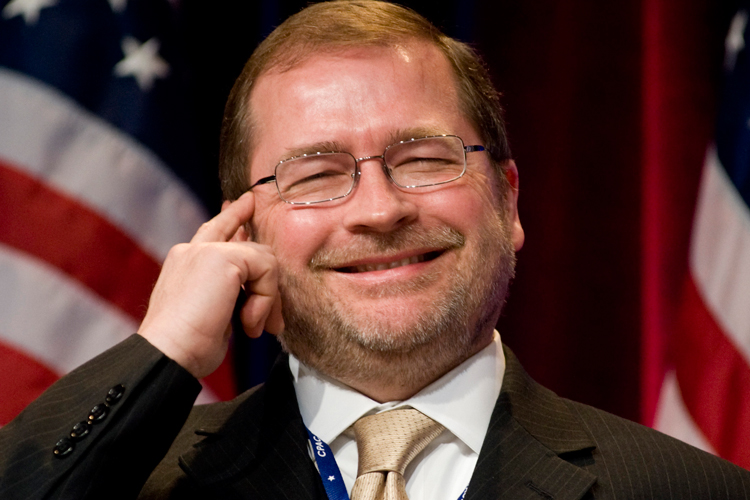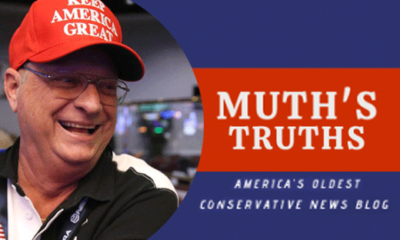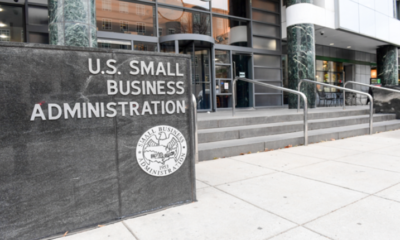(Grover Norquist | Americans for Tax Reform) – Taxes will be front and center on Election Day. Again.
A collection of state-based ballot measures scheduled for an up or down vote this November give us a window into a tax debate that will increasingly dominate American politics: the elimination of most state income taxes and the drive for a single rate, flat tax at the federal level.
Here is the state of play:
President Joe Biden and the entire Democrat Congress voted this spring to increase taxes on all Americans. Every Democrat voted for those tax hikes on energy, mid-sized and family businesses, and the stocks in the 401Ks and IRAs held by 58% of all Americans. Every Republican in congress voted no.
Twelve red states cut taxes last year. Another 11 red states cut taxes this year.
Five red states voted to move to a flat rate income tax away from a progressive or graduated income tax. The leadership in ten red states have announced they plan to move their state income tax over time to zero.
Almost all Republicans on the federal ballot have signed the Taxpayer Protection Pledge promising to oppose and vote against any tax hike. Not one Democrat was willing to make that commitment.
Now let’s look at the measures on the November ballot that will raise or cut taxes.
California’s Proposition 30 would increase the top tax rate of 13.3% by 1.75% for a total of 15.05%. This tax would increase subsidies for people who can afford to buy electric vehicles.
Interestingly, California Gov. Gavin Newsom is opposing this higher tax. He is aware that more than one million Californians have fled higher taxes to move to other states over a ten-year period.
Arizona is moving in the other direction: Proposition 132 will make it more difficult to raise taxes. If approved, the measure will establish a 60% threshold vote (not a simple majority) for any future ballot measure that attempts to raise taxes. This will protect Arizona taxpayers from initiatives funded by rich liberals in California to increase Arizona taxes. Already the Arizona state constitution requires a two-thirds vote for any tax hike to be enacted by the state legislature.
A recent failed effort by left-wing out-of-state groups would have pushed the Arizona income tax to eight percent. The progressives lost.
Starting Jan. 1 Arizona will feature a flat 2.5% rate and the Republican governor and legislature are determined to move to zero. California is trying to kill such tax competition.
The movement to a single rate or flat rate income tax this year in Iowa, Idaho, Mississippi, Georgia and Arizona will add five more states to those states that already have a single rate/flat tax: Massachusetts, Pennsylvania, Illinois, Colorado, Utah, Indiana, North Carolina, New Hampshire and Michigan.
And of course, the eight states with NO income tax already have a flat rate tax of zero: Texas, Florida, Tennessee, South Dakota, Washington, Alaska, Wyoming and Nevada.
The spending interests hate flat rate taxes. Flat taxes are so very hard to increase. Massachusetts for instance has a single rate tax required by the state constitution.
Five times the spending interests have put on the ballot in Massachusetts an amendment to move away from the flat rate tax to a progressive or graduated income tax system.
Five times the voters of deep blue Massachusetts have voted down the effort by politicians to divide taxpayers into different groups that can be targeted and taxed one at a time: 1962, 1968, 1972, 1976, 1994.
This year the Left in Massachusetts has placed Question 1 on the ballot to impose a graduated or progressive income tax.
Will it pass? One hint comes from the failure of Democrat Governor J.B. Pritzker of Illinois who spent $50 million of his own personal fortune in 2020 to push a referendum to create a graduated rather than flat tax in Illinois. In November 2020 the voters of blue Illinois rejected it 53% – 47%.
Thanks to Jon Caldara of the Independence Institute, Colorado will have Proposition 121 on the ballot this November — a permanent reduction in the state’s single rate income tax from 4.55% to 4.40%.
Colorado voters passed a similar reduction — from 4.63% to 4.55% — on the 2020 ballot and look to do it again. Even the state’s very left-wing tax-and-spend Gov. Jared Polis supports these across-the-board reductions in the state’s flat tax.
We see this fall the continuation of a move towards single rate taxes and away from graduated taxes while Blue state spending interests keep trying to defend and expand the cost and number of graduated income taxes. The nation however is moving towards flatter and lower state taxes. Someday that may move to Washington, D.C.
Flat rate taxes are easy to reduce — everyone benefits. They are hard to increase — everyone can see what it would cost.
What is not to like?








Facebook
Twitter
Pinterest
RSS